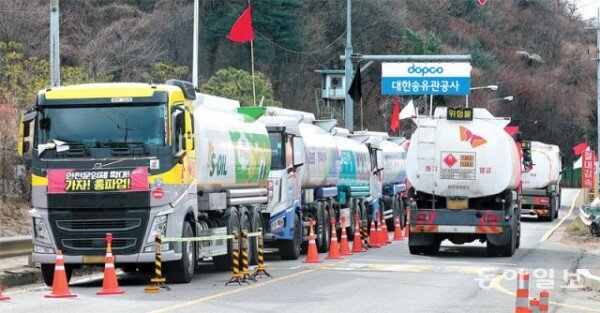Analysis of the “Weakening Struggle Power of the Korean Confederation of Trade Unions”
The National Confederation of Democratic Trade Unions (KCTU) National Workers’ Convention, attended by some 10,000 people (according to organizers), on the 3rd appears to have been smaller than expected as affiliated unions dropped out of the strike ranks. While the government emphasizes the “tough response” every day, an analysis is being conducted that the strike at the cargo solidarity headquarters of the Korean Federation of Public Transport Unions Federation of Trade Unions is also losing its fighting power.
○ More than 10,000 people stopped gathering even after calling for a “solidarity struggle”
According to trade union circles, on the 4th, about 10,000 people gathered at the National Workers’ Convention held the day before by the Korean Confederation of Trade Unions in Seoul and Busan. The contestants insisted on “blocking government labor corruption and reviewing Articles 2 and 3 of the Union Law (yellow envelope law legislation)” and said, “Let’s focus on the struggle of the cargo union for solidarity “. KCTU Chairman Yang Kyung-soo said at the Seoul convention, “The government and the ruling party regard KCTU as a thorn in their side.” Lee Bong-joo, head of the cargo union, compared the government’s order to start work to “martial law” and criticized that “(the government) is trying to put the workers on a leash.”
Initially, the event was only meant to be held in Seoul, but as the cargo union strike continued, the trade union confederation decided to disperse the event on the 30th of last month in Seoul and Busan. The Central Executive Committee of the Korean Confederation of Trade Unions issued an appeal on the 1st, encouraging “1.1 million union members to fight hard.”
However, the scope of the National Workers’ Congress was far smaller than its predecessor. Organizers estimated that about 90,000 people attended the National Workers Convention on Sept. 12 last month, and about 28,000 people attended the National Simultaneous Resolution Meeting on Sept. 24. It is interpreted as the effect that the KCTU’s organizational mobilization power has weakened due to the large-scale protests that have continued since the new government took office and that the unions of the National Railroad Workers’ Union and the Seoul Transportation Corporation have left the ranks of the strike due to the conclusion of the negotiations. For this reason, the prevailing view is that the knock-on effect of the simultaneous national general strike and all-out wrestling competition announced on the 6th will be no greater than initially expected.
○ The recovery of logistics after the decline in strike participation
The cargo union plans to continue the fight by refusing the order to start work, but if the situation continues, internal cohesion could weaken further. According to the Ministry of Land, Infrastructure and Transport, around 2,900 of the 22,000 members of the cargo union took part in the strike on the 4th. This is 67% of the participants (about 4,300) on the 27th of last month, a week ago. Container imports and exports at major ports are also showing signs of recovery. The Ministry of Land, Infrastructure and Transport announced that as of 17:00 on the 4th, the amount of containers entering and leaving the 12 major domestic ports had doubled compared to 27 last month. The Port of Busan, which has the largest volume of imports and exports in normal times, has also doubled its container imports and exports during the same period.
The volume of transport in the cement sector is also progressively increasing, where the work start order was issued on the 29th of last month. As of the 3rd, the amount of cement transported was 84,000 tons, recovering to 80% of the normal Saturday transport (105,000 tons). However, on the 4th, Land, Infrastructure and Transport Minister Won Hee-ryong posted on his Facebook page: “The Busan, Ulsan and Gyeongnam branches of the Korean Confederation of Trade Unions have issued an urgent notice to union members to they stop pouring formwork concrete (cement) since 5.” he wrote. They are said to be trying to expand the strike front at the construction site as the strike force of the cargo union has weakened. The building union supported the strike of the cargo union on the 2nd and decided to go on a “solidarity strike”.
Meanwhile, the public transport workers’ union claimed that “the International Labor Organization (ILO) initiated an emergency intervention procedure against the Korean government on the 2nd” and that “it was because the government violated the regulations labor law as the order to start work.” In this regard, the Ministry of Labor and Labor has denied: “It is not an official supervisory procedure, but a simple investigation without legal effects”. The Korean Confederation of Trade Unions asked the ILO to intervene in the June strike by trade unions, but the strike ended before the Korean government gave its opinion.
Reporter Joo Ae-jin [email protected]
Reporter Jeong Soon-gu [email protected]
Journalist Yuni Kim [email protected]


